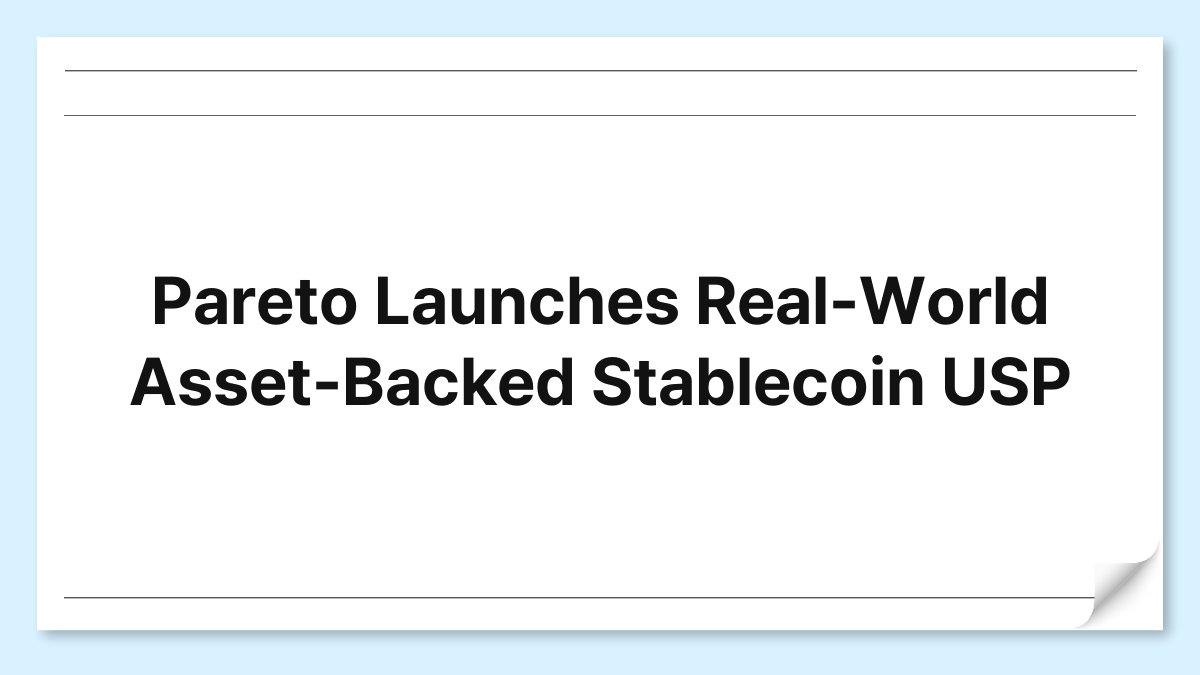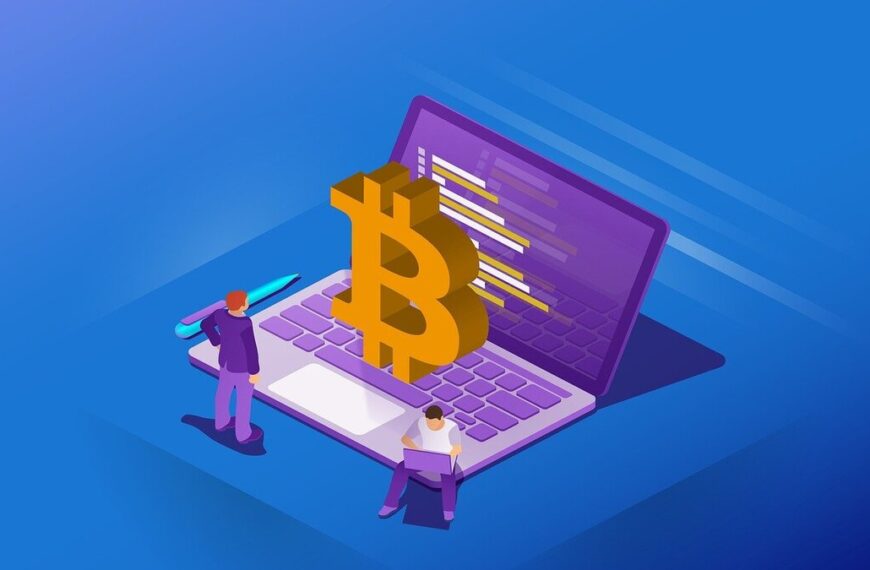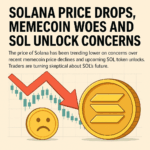[케이브릿지 미디어/Jay Son] The launch of Pareto’s real-world asset-backed stablecoin, known as USP, marks a significant development in the cryptocurrency landscape.
This article will delve into the implications of this new stablecoin, examining its potential impact on the market and its role in bridging the gap between digital assets and traditional finance.
Readers will gain insights into the underlying technology, the regulatory environment, and the strategic advantages that USP may offer to investors.
Additionally, the article will explore how USP compares to other stablecoins and the broader implications for global financial systems.
As the cryptocurrency market evolves, understanding the nuances of such innovations becomes crucial for informed investment decisions.
The Concept of Real-World Asset-Backed Stablecoins
Real-world asset-backed stablecoins represent a new frontier in the cryptocurrency space.
Unlike traditional cryptocurrencies that rely on market speculation, these stablecoins are pegged to tangible assets such as real estate, commodities, or fiat currencies.
This linkage provides a level of stability that is often absent in the more volatile digital asset markets.
By grounding the value of a stablecoin in physical assets, investors may experience reduced risk and enhanced confidence in their holdings.
The emergence of such stablecoins reflects a growing recognition of the need for stability in the digital economy.
In the context of Pareto’s USP, the stablecoin is designed to be fully collateralized by real-world assets.
This approach not only aims to mitigate price volatility but also to enhance liquidity by making it easier to convert digital tokens into tangible value.
The use of real-world assets as collateral can attract a broader range of investors who may have previously been hesitant to engage with cryptocurrencies due to concerns about volatility.
By providing a more stable investment vehicle, Pareto may facilitate greater adoption of blockchain technology across various sectors.
The technology underpinning real-world asset-backed stablecoins is also noteworthy.
Blockchain technology enables transparent and secure transactions, allowing for real-time tracking of asset values and ownership.
This transparency can enhance trust among users and regulators alike.
Furthermore, the smart contracts that govern these stablecoins can automate various processes, such as asset valuation and redemption, thereby reducing operational inefficiencies.
The integration of these technologies positions USP as a potentially transformative player in the stablecoin market.
Market Dynamics and Competitive Landscape
The introduction of Pareto’s USP comes at a time when the stablecoin market is experiencing significant growth.
Major players such as Tether and USD Coin have established themselves as dominant forces, primarily backed by fiat currencies.
However, the rise of real-world asset-backed stablecoins introduces a new layer of competition.
USP’s unique positioning may allow it to capture market share from traditional stablecoins by appealing to investors seeking stability and transparency in their investments.
The competitive landscape is further complicated by regulatory developments across various jurisdictions.
In the United States, regulators are increasingly scrutinizing stablecoins, focusing on issues related to consumer protection and financial stability.
The European Union is also advancing its regulatory framework for digital assets, which could influence the adoption of stablecoins in the region.
In contrast, some Asian markets are embracing cryptocurrency innovations, potentially providing a more favorable environment for new entrants like USP.
Investors should consider how the evolving regulatory landscape may affect the adoption and use of real-world asset-backed stablecoins.
While increased regulation can enhance consumer confidence, it may also impose additional compliance burdens on issuers.
The ability of Pareto to navigate these regulatory challenges will be crucial to its success in the competitive stablecoin market.
Potential Use Cases for USP
The versatility of Pareto’s USP may open up numerous use cases across various industries.
One potential application is in the realm of remittances.
Traditional remittance services often involve high fees and lengthy processing times.
By leveraging the stability of a real-world asset-backed stablecoin, users could potentially transfer value across borders more efficiently and at a lower cost.
This could democratize access to financial services for individuals in developing regions, enhancing financial inclusion.
Another promising use case lies in the realm of decentralized finance (DeFi).
As DeFi continues to gain traction, the need for stable assets becomes increasingly critical.
USP could serve as a reliable medium of exchange within DeFi protocols, enabling users to engage in lending, borrowing, and trading without the fear of price volatility.
The integration of USP into DeFi platforms could further enhance liquidity and facilitate more complex financial transactions.
Additionally, USP may find applications in supply chain finance.
The ability to tokenize real-world assets can streamline transactions and improve transparency in supply chains.
By utilizing USP, businesses could enhance their cash flow management and reduce the risks associated with traditional financing methods.
These diverse use cases highlight the potential for real-world asset-backed stablecoins to disrupt various sectors and create new opportunities for investors.
Regulatory Considerations and Compliance
The regulatory landscape surrounding stablecoins is evolving rapidly, and Pareto’s USP will need to navigate this complex environment.
In many jurisdictions, regulators are concerned about the implications of stablecoins for monetary policy, consumer protection, and financial stability.
As such, compliance with existing regulations and proactive engagement with regulators will be essential for the success of USP.
In the United States, the regulatory framework for stablecoins is still being developed.
The Biden administration has indicated a desire to establish clearer guidelines for digital assets, particularly in the context of consumer protection and financial stability.
Pareto will need to ensure that USP complies with any forthcoming regulations to maintain its legitimacy and market presence.
In Europe, the European Central Bank is exploring the potential issuance of a digital euro, which could introduce additional competition for stablecoins like USP.
The EU is also working on the Markets in Crypto-Assets Regulation (MiCA), which aims to create a comprehensive regulatory framework for digital assets.
Understanding and adapting to these regulatory changes will be critical for Pareto as it seeks to position USP effectively within the European market.
Investment Implications and Market Outlook
The launch of USP presents various implications for investors.
The introduction of a real-world asset-backed stablecoin could provide a new avenue for diversifying portfolios.
Investors seeking to mitigate risk may find value in incorporating USP into their strategies as a stable asset.
The potential for reduced volatility and enhanced liquidity could make USP an attractive option for both institutional and retail investors.
However, potential investors should remain cognizant of the risks associated with any new financial product.
While real-world asset-backed stablecoins offer stability, they are not immune to market fluctuations or regulatory challenges.
Investors should conduct thorough due diligence and consider the broader market dynamics before making investment decisions.
The market outlook for Pareto’s USP appears promising, particularly as the demand for stable assets continues to grow.
As more individuals and institutions recognize the advantages of real-world asset-backed stablecoins, USP may gain traction in both traditional and digital finance.
The ability to adapt to regulatory changes and demonstrate tangible use cases will be key factors in determining its success.
Conclusion
In conclusion, Pareto’s launch of the real-world asset-backed stablecoin USP represents a significant development in the cryptocurrency market.
By providing a stable investment vehicle linked to tangible assets, USP has the potential to attract a diverse range of investors.
The evolving regulatory landscape and competitive dynamics will play a critical role in shaping the future of USP and its adoption in various sectors.
As the cryptocurrency ecosystem continues to mature, innovations like USP may pave the way for a more integrated financial future.
Investors should remain vigilant and informed as they navigate this dynamic landscape.








